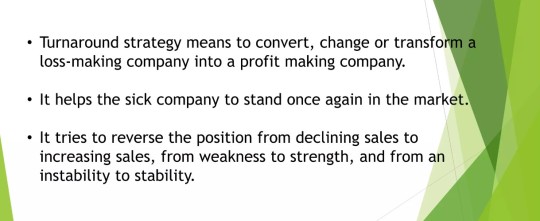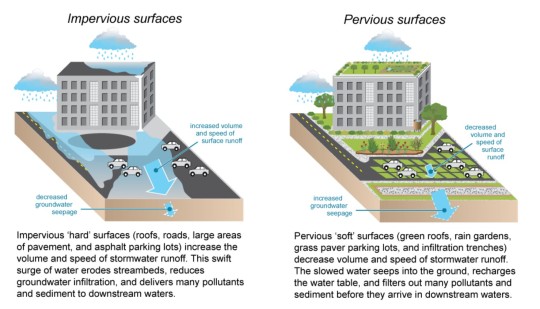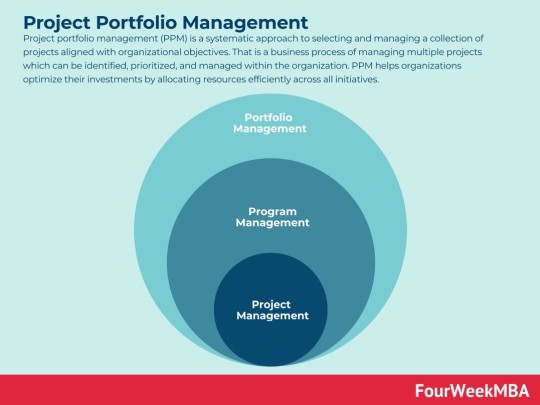Text

How to turn around a declining corporate
Turning around a declining corporation requires a strategic and multi-faceted approach. Here's a comprehensive guide:
1. Diagnose the Issues: Understand the root causes of the decline. Conduct a thorough analysis of financial statements, market trends, customer feedback, and employee morale to identify weaknesses.
2. Develop a Turnaround Plan: Create a detailed plan outlining specific actions to address identified issues. Prioritize initiatives based on their potential impact and feasibility. This plan should include short-term fixes and long-term strategies for sustainable growth.
3. Stabilize Finances: Focus on improving cash flow, reducing costs, and managing debt. This might involve renegotiating contracts, divesting non-core assets, or restructuring liabilities.
4. Reassess the Business Model: Evaluate the company's products, services, target markets, and competitive positioning. Determine if adjustments are needed to better align with changing customer needs and market dynamics.
5. Focus on Core Competencies: Concentrate resources on areas where the company has a competitive advantage. Streamline operations to enhance efficiency and effectiveness.
6. Invest in Innovation: Foster a culture of innovation to develop new products, services, or processes that can differentiate the company in the market and drive growth.
7. Strengthen Leadership and Governance: Ensure that the leadership team is capable and zaligned with the turnaround objectives. Implement transparent communication channels and accountability mechanisms.
8. Engage Employees: Empower employees by involving them in decision-making processes and providing opportunities for skill development. A motivated and engaged workforce is essential for executing the turnaround plan effectively.
9. Rebuild Customer Trust: Focus on delivering exceptional value and customer service to rebuild trust and loyalty. Solicit feedback from customers and act on it to improve the overall customer experience.
10. Communicate Effectively: Be transparent about the challenges the company is facing and the steps being taken to address them. Maintain open lines of communication with employees, customers, suppliers, and other stakeholders.
11. Monitor Progress and Adjust: Establish key performance indicators (KPIs) to track progress towards turnaround goals. Regularly review performance metrics and be prepared to make adjustments to the turnaround plan as needed.
12. Celebrate Successes: Recognize and celebrate achievements along the way to boost morale and maintain momentum.
Remember that turning around a declining corporation is a complex and often challenging process that requires commitment, perseverance, and strategic leadership.
#KhalidAlbeshri #pivot #Holdingcompany #CEO #Realestate #realestatedevelopment #middleeast #contentmarketing #businessmanagement #businessconsultants #businessstartup #marketingtips #خالدالبشري
#advertising#artificial intelligence#autos#business#developers & startups#edtech#education#finance#futurism#marketing
1 note
·
View note
Text

How to manage conflict between corporate departments?
Managing conflict between corporate departments requires a combination of communication, collaboration, and strategic leadership. Here are some steps you can take to effectively manage conflict:
1. Open Communication: Encourage open communication between departments. Create channels where employees can voice their concerns, share ideas, and resolve issues constructively. Transparency helps in understanding different perspectives and finding common ground.
2. Clarify Roles and Responsibilities: Clearly define the roles and responsibilities of each department to minimize overlaps and conflicts. When everyone understands their duties, it reduces the likelihood of misunderstandings and conflicts arising from unclear boundaries.
3. Establish Common Goals: Identify common goals that all departments can work towards. When teams have shared objectives, it fosters collaboration and encourages them to focus on collective success rather than individual agendas.
4. Mediation and Conflict Resolution: Train managers or designate a neutral party to mediate conflicts when they arise. Provide conflict resolution training to employees to equip them with the skills needed to address conflicts constructively and find mutually beneficial solutions.
5. Encourage Collaboration: Foster a culture of collaboration by organizing cross-departmental projects or initiatives. Encourage employees to work together towards shared objectives, which can help build trust and strengthen relationships between departments.
6. Set Clear Policies and Procedures: Establish clear policies and procedures for resolving conflicts between departments. Outline steps to be followed, escalation paths, and mechanisms for seeking help or intervention when needed.
7. Lead by Example: Senior leadership should demonstrate a commitment to resolving conflicts in a fair and transparent manner. Leaders should model effective communication, collaboration, and conflict resolution skills, setting the tone for the entire organization.
8. Celebrate Successes Together: Recognize and celebrate achievements that result from inter-departmental collaboration.
9. Continuous Improvement: Regularly review and assess the effectiveness of conflict management strategies within the organization. Solicit feedback from employees and make adjustments as needed to improve processes and prevent future conflicts.
10. Cultivate a Positive Work Environment: Foster a positive work environment where employees feel valued, respected, and supported.
By implementing these strategies, you can create a collaborative and harmonious work environment where departments can work together effectively towards shared goals, minimizing conflicts along the way.
#KhalidAlbeshri #pivot #Holdingcompany #CEO #Realestate #realestatedevelopment #middleeast #contentmarketing #businessmanagement #businessconsultants #businessstartup #marketingtips #خالدالبشري
#advertising#artificial intelligence#autos#business#developers & startups#education#edtech#finance#futurism#marketing
0 notes
Text

Emotional intelligence in project management Emotional intelligence (EI) plays a crucial role in project management, perhaps even more so than technical skills in many cases.
Effective Communication: Project management involves constant communication with team members, stakeholders, and clients. High EI enables project managers to communicate effectively, listen actively, and convey their messages clearly, which helps in resolving conflicts, managing expectations, and building rapport.
Conflict Resolution: Conflicts are inevitable in projects due to differing opinions, priorities, and objectives. Emotionally intelligent project managers can navigate conflicts constructively by understanding the underlying emotions, managing their own emotions, and empathizing with the perspectives of others. This leads to quicker resolution and maintains positive relationships within the team.
Team Building: Building and leading a successful project team requires more than just technical skills. EI allows project managers to create a positive work environment, foster trust among team members, and motivate them to perform at their best.
Adaptability and Resilience: Projects often face unexpected challenges, setbacks, and changes. Emotionally intelligent project managers are adaptable and resilient, able to manage stress, stay calm under pressure, and quickly pivot when necessary.
Stakeholder Management: Project success depends not only on meeting technical requirements but also on satisfying the needs and expectations of various stakeholders. EI enables project managers to understand stakeholders' perspectives, anticipate their concerns, and manage relationships effectively, ultimately leading to greater stakeholder satisfaction and support
Decision Making: Emotionally intelligent project managers are adept at making decisions that balance rational analysis with empathy and intuition. They consider the impact on all stakeholders, weigh alternatives objectively, and are not swayed by personal biases or emotions, resulting in better decisions for the project.
Influence and Leadership: Leadership is a fundamental aspect of project management, and EI is closely tied to effective leadership. Emotionally intelligent leaders inspire and influence others through their authenticity, empathy, and ability to connect on a human level, rallying the team around a common vision and purpose. In essence, emotional intelligence is the foundation upon which successful project management is built. While technical skills and knowledge are essential, it's the ability to understand and manage emotions, both within oneself and in others, that truly sets exceptional project managers apart.
#KhalidAlbeshri#pivot#Holdingcompany#CEO#Realestate#realestatedevelopment#contentmarketing#businessmanagement#businessconsultants#businessstartup#marketingtips#خالدالبشري
#advertising#artificial intelligence#autos#business#developers & startups#edtech#education#finance#futurism#marketing
3 notes
·
View notes
Text

Real estate development challenges:
- Regulatory Hurdles: Navigating complex regulations, zoning laws, permits, and building codes can be time-consuming and costly for developers. Changes in regulations or government policies can also impact project feasibility and timelines.
- Land Acquisition and Site Development: Finding suitable land for development at an affordable price can be challenging, especially in urban areas where land is scarce and expensive. Site development may also involve addressing environmental concerns, infrastructure requirements, and community engagement.
- Financing and Capital Constraints: Securing financing for real estate projects, whether through loans, equity investments, or other sources, can be difficult, particularly during economic downturns or in markets with tight lending conditions. Developers may face challenges in raising sufficient capital to fund their projects.
- Market Volatility and Uncertainty: Real estate markets are subject to fluctuations in supply and demand, interest rates, and economic conditions, which can affect property values, rental rates, and sales volumes. Uncertainty in market trends makes it challenging for developers to forecast project returns accurately.
- Construction Costs and Delays: Rising construction costs, labor shortages, and supply chain disruptions can impact project budgets and timelines. Delays in obtaining permits, approvals, or construction permits can further exacerbate costs and affect project profitability.
- Changing Consumer Preferences: Shifts in demographics, lifestyle preferences, and technological advancements can influence demand for different types of real estate products, requiring developers to adapt their offerings to meet evolving market needs.
- Environmental and Sustainability Considerations: Increasing awareness of environmental issues and sustainability concerns has led to greater emphasis on green building practices, energy efficiency, and resilience in real estate development.
- Community Opposition and NIMBYism: Resistance from local communities, residents, and interest groups can pose challenges to real estate development projects, particularly if they perceive the development as detrimental to the neighborhood or environment.
- Economic and Political Risks: Real estate development is susceptible to broader economic and political risks, including recession, inflation, geopolitical instability, and changes in government policies or regulations. These factors can impact investor confidence, financing availability, and market dynamics.
- Technological Disruption: Emerging technologies such as artificial intelligence, blockchain, and 3D printing are transforming various aspects of real estate development, from design and construction to property management and marketing.
#KhalidAlbeshri #pivot #Holdingcompany #CEO #Realestate #realestatedevelopment #contentmarketing #businessmanagement #businessconsultants #businessstartup #marketingtips #خالدالبشري
#advertising#artificial intelligence#autos#business#developers & startups#edtech#education#finance#futurism#marketing
0 notes
Text

Internet Of Things IN REAL ESTATE:
Internet of Things (IoT) smart devices can do more than just monitor the physical environment of a building; they can also help monitor activity and protect from unauthorized usage. For example, IoT sensors are used in various systems within buildings to track water pressure and electricity usage. You’ll know if something needs maintenance if any of the indicators are off the charts. In the coming years, IoT devices will also become increasingly intertwined with other aspects of real estate management. For example, this real estate technology can be used to:
1. Help regulate heating and cooling systems to save energy and reduce costs for property owners;
2. Connect with smart locks, so you can control access remotely or based on specific conditions;
3. Enable agents to provide a more personalized and seamless experience;
4. Monitor customer activity on the property so that agents can respond to any inquiries quickly and efficiently;
5. Send automated notifications about maintenance issues or late payments.
All in all, IoT devices are set to revolutionize the real estate market in the coming years. By leveraging this powerful technology, real estate agents can provide a more tailored and efficient service to their clients. This could potentially increase customer satisfaction and loyalty.
Example
CBRE uses IoT sensors—they collect data about building performance, like energy usage—to improve building management and optimize operations. In one case, using such sensors allowed the service to identify HVAC system issues and cut energy costs by 20%. CBRE is also helping Shell reach its goal of reducing 20% greenhouse gas emissions by 2035, thanks to IoT.
#KhalidAlbeshri #pivot #Holdingcompany #CEO #Realestate #realestatedevelopment #contentmarketing #businessmanagement #businessconsultants #businessstartup #marketingtips #خالدالبشري
#advertising#artificial intelligence#autos#business#developers & startups#edtech#education#finance#futurism#marketing
2 notes
·
View notes
Text
Discover the Top 10 Real Estate Agencies in Saudi Arabia for 2024! 🏠🌆 Whether you're searching for a dream home, a prime commercial space, or lucrative investment opportunities, these agencies are at the forefront of the Saudi real estate market. From innovative solutions to unparalleled expertise, these agencies have proven their commitment to excellence. 🌐🔍
For more information:- https://www.allaroundworlds.com/real-estate-agencies/
1 note
·
View note
Text
The ruling is historical for the real estate market in the UAE as the Dubai court ordered Saudi Minister Ahmed Al-Rajhi to pay nearly 2 billion dirhams
According to Arabi21, the verdict was issued on the 25th of November.
An Emirati court has charged a Saudi minister with fraud in Dubai.
The case was filed by a Palestinian-Canadian owner of an investment company.
The well-known case dates back to 2008.

A court in Dubai has charged a Saudi minister and four of his brothers with fraud in a case filed by Palestinian-Canadian businessperson Omar Ayesh.

Ahmed al-Rajhi, the current Saudi Minister of Labour, and his brothers were accused of seizing the properties and assets of Tameer Holding Investment (LLC), including the shares of its founder, Omar Ayesh.

According to Arabi21, the verdict was issued on the 25th of November.
The court demanded the Saudi minister and his brothers pay compensation to the Palestinian businessperson of around 1.7 billion Emirati dirhams ($462.8 million).
The court also ruled to charge Rajhi an annual 9% interest on the amount of the fine, starting from the 12th of March, 2017, until the completion of payment.

The court also ordered Rajhi to pay Ayesh, who holds 25% of shares in Tameer Holding Investment (LLC), $2.8m in compensation for material and moral damages.
According to Arabi21, the case was filed when the Saudi minister and four of his brothers seized the assets and properties of Tameer Holding Investment (LLC), including the shares of its founder and hundreds of other clients.
“The ruling is significant for the real estate market in the emirate as the Dubai court demanded Saudi Minister Ahmed Al-Rajhi to pay nearly 2 billion dirhams,” Ayesh remarked.
“Although the ruling came at a much lower sum than I expected, it represents a big victory for justice in the face of injustice and corruption,” he added.
The International Justice Mission (IJM) in Washington reflected on the case, saying that it “will pursue to expose all corrupt persons, regardless of their seniority or position.”
1 note
·
View note
Text

Commercial and Mixed-Use Developments in Meddle East: Commercial and mixed-use developments play a crucial role in the real estate landscape of the Middle East, particularly in rapidly growing urban centers like Dubai, Abu Dhabi, Riyadh, Doha, and others. Here's an overview of these types of developments in the region: - Commercial Centers: Middle Eastern cities boast numerous commercial centers, including office buildings, business parks, and corporate towers. These developments cater to the needs of local and international businesses, offering modern office spaces equipped with state-of-the-art facilities and amenities. - Shopping Malls and Retail Centers: The Middle East is renowned for its extravagant shopping malls and retail centers, which serve as social hubs and entertainment destinations as much as they do commercial spaces. - Mixed-Use Developments: Mixed-use projects integrate various components such as residential, commercial, retail, hospitality, and entertainment within a single development, creating vibrant urban communities where people can live, work, and play. - Hospitality and Entertainment Complexes: The Middle East is home to some of the world's most luxurious hotels, resorts, and entertainment complexes, often integrated into larger mixed-use developments. Projects like Atlantis The Palm in Dubai, The Pearl-Qatar in Doha, and the Ritz-Carlton Riyadh in Saudi Arabia exemplify the region's penchant for extravagance and hospitality excellence. - Transportation Hubs: With increasing urbanization and mobility needs, transportation hubs have become integral components of mixed-use developments in the Middle East. Projects such as Dubai's Union Square and Riyadh's King Abdullah Financial District incorporate transportation facilities like metro stations, bus terminals, and parking structures to enhance connectivity and accessibility for residents, visitors, and commuters. - Sustainable Development: Many new commercial and mixed-use developments in the Middle East are incorporating sustainable design principles and green building practices to minimize environmental impact and enhance energy efficiency. This includes features such as solar panels, green roofs, rainwater harvesting systems, and efficient HVAC systems, aligning with global sustainability trends and local government initiatives. Overall, commercial and mixed-use developments continue to thrive in the Middle East, driven by urbanization, economic growth, and a desire for innovative and integrated urban spaces that meet the diverse needs of residents, businesses, and visitors.
#KhalidAlbeshri #pivot #Holdingcompany #CEO #Realestate #realestatedevelopment #contentmarketing #businessmanagement #businessconsultants #businessstartup #marketingtips #خالدالبشري
#advertising#artificial intelligence#autos#business#developers & startups#edtech#education#finance#futurism#marketing
0 notes
Text

Green infrastructure and landscaping in real estate development:
Green infrastructure and landscaping play crucial roles in real estate development, contributing to sustainability, aesthetics, and overall environmental quality. Here's how green infrastructure and landscaping are incorporated into real estate projects:
1. Stormwater Management: Green infrastructure elements like rain gardens, bioswales, and permeable pavement help capture and infiltrate stormwater runoff, reducing the burden on traditional drainage systems and minimizing pollution of waterways.
2. Flood Mitigation: Strategic placement of green spaces, such as wetlands and retention ponds, can help mitigate flooding by absorbing excess water during heavy rainfall events and providing natural buffers against flood damage.
3. Biodiversity Enhancement: Incorporating native vegetation, wildlife habitats, and green corridors into landscaping designs promotes biodiversity, supports local ecosystems, and creates natural habitats for various species.
4. Heat Island Reduction: Green roofs, shade trees, and vegetated open spaces help mitigate the urban heat island effect by providing cooling through evapotranspiration and shading, thereby improving comfort for occupants and reducing energy demand for cooling.
5. Air Quality Improvement: Vegetation acts as a natural air filter, capturing pollutants and particulate matter from the air. Strategically planting trees and vegetation around buildings can help improve air quality and reduce the urban heat island effect.
6. Aesthetic Enhancement: Well-designed green spaces and landscaping enhance the visual appeal of real estate developments, creating attractive and inviting environments for residents, tenants, and visitors.
7. Health and Well-being: Access to green spaces and natural environments has been linked to improved mental health, stress reduction, and overall well-being.
8. Community Engagement: Green spaces provide opportunities for community engagement, recreation, and social interaction, fostering a sense of community and belonging among residents and occupants.
9. Property Value Enhancement: Properties with well-designed and maintained green spaces often command higher property values and rental premiums due to their desirability and perceived quality of life benefits.
10. Regulatory Compliance and Certification: Many municipalities require developers to incorporate green infrastructure and landscaping into their projects to meet regulatory requirements related to stormwater management, environmental protection, and sustainability. Additionally, green infrastructure and landscaping elements can contribute to achieving green building certifications such as LEED and BREEAM.
#KhalidAlbeshri #pivot #Holdingcompany #CEO #Realestate #realestatedevelopment #contentmarketing #businessmanagement #businessconsultants #businessstartup #marketingtips #خالدالبشري
#advertising#artificial intelligence#autos#business#developers & startups#edtech#education#finance#futurism#marketing
2 notes
·
View notes
Text

Artificial intelligence in real estate industry:
Artificial intelligence (AI) is increasingly being utilized in the real estate industry to streamline processes, enhance decision-making, and improve overall efficiency. Here are some ways AI is making an impact in real estate:
1. Property Valuation: AI algorithms can analyze vast amounts of data including historical sales data, property features, neighborhood characteristics, and market trends to accurately estimate property values. This helps sellers and buyers to make informed decisions about pricing.
2. Predictive Analytics: AI-powered predictive analytics can forecast market trends, identify investment opportunities, and anticipate changes in property values. This information assists investors, developers, and real estate professionals in making strategic decisions.
3. Virtual Assistants and Chatbots: AI-driven virtual assistants and chatbots can handle customer inquiries, schedule property viewings, and provide personalized recommendations to potential buyers or renters. This improves customer service and helps real estate agents manage their workload more efficiently.
4. Property Search and Recommendation: AI algorithms can analyze user preferences, search history, and behavior patterns to provide personalized property recommendations to buyers and renters. This enhances the property search experience and increases the likelihood of finding suitable listings.
5. Property Management: AI-powered tools can automate routine property management tasks such as rent collection, maintenance scheduling, and tenant communication. This reduces administrative overhead and allows property managers to focus on more strategic aspects of their role.
6. Risk Assessment: AI algorithms can analyze factors such as credit history, employment status, and financial stability to assess the risk associated with potential tenants or borrowers. This helps landlords and lenders make informed decisions about leasing or lending.
7. Smart Building Technology: AI-enabled sensors and IoT devices can collect and analyze data on building occupancy, energy consumption, and environmental conditions to optimize building operations, improve energy efficiency, and enhance occupant comfort.
#KhalidAlbeshri#pivot#Holdingcompany#CEO#Realestate#realestatedevelopment#contentmarketing#businessmanagement#businessconsultants#businessstartup#marketingtips#خالدالبشري
#advertising#artificial intelligence#autos#business#developers & startups#edtech#education#futurism#finance#marketing
8 notes
·
View notes
Text

How to implement a company plan to achieve targeted performance and results:
- Understand the Plan: Ensure that you thoroughly understand the company plan, including its objectives, strategies, and targets.
- Communicate Clear Goals: Clearly communicate the targeted performance metrics and results to all employees involved. Ensure that everyone understands what is expected of them and how their efforts contribute to the overall goals of the company.
- Allocate Resources: Assess the resources (financial, human, technological, etc.) required to execute the plan successfully. Allocate resources effectively to support various initiatives and projects outlined in the plan.
- Establish Key Performance Indicators (KPIs): Define specific KPIs that will measure progress toward achieving the targeted performance and results. These KPIs should be aligned with the overall objectives of the plan and should be measurable, achievable, relevant, and time-bound (SMART).
- Create Action Plans: Develop action plans detailing the steps and activities required to achieve each objective outlined in the company plan. Assign responsibilities to individuals or teams and establish timelines for completion.
- Provide Training and Development: Identify any skill gaps within the organization that may hinder the successful implementation of the plan. Provide training and development opportunities to employees to equip them with the necessary skills and knowledge.
- Encourage Collaboration: Foster a culture of collaboration and teamwork to ensure that departments and individuals work together cohesively toward common goals. Encourage open communication and idea-sharing among teams.
- Monitor Progress: Regularly monitor and track progress against the established KPIs. Use performance dashboards, progress reports, and meetings to keep stakeholders informed of progress and address any issues or challenges that arise.
- Adjust and Adapt: Be prepared to adjust the plan as needed based on evolving circumstances, market conditions, or internal factors. Flexibility is essential to ensuring that the company remains responsive and agile in pursuit of its goals.
- Celebrate Successes and Learn from Failures: Celebrate achievements and milestones reached along the way to keep morale high and motivate employees. Additionally, analyze any setbacks or failures to identify lessons learned and opportunities for improvement in future initiatives.
- Seek Feedback: Encourage feedback from employees at all levels of the organization regarding the implementation of the plan. Solicit suggestions for improvement and address any concerns or challenges raised by employees.
- Continuous Improvement: Commit to continuous improvement by regularly evaluating the effectiveness of the plan and making adjustments as necessary to optimize performance and results.
#KhalidAlbeshri #Holdingcompany #CEO #Realestate #gulfcountries #contentmarketing #businessmanagement #businessconsultants #خالدالبشري
#advertising#artificial intelligence#autos#business#developers & startups#edtech#education#finance#futurism#marketing
0 notes
Text

Key features and components of #Oracle #Primavera EPPM include:
- Project Management:
1. Project Planning: Allows users to create detailed project plans, define tasks, and establish dependencies.
2. Resource Management: Helps in resource allocation and tracking to ensure optimal utilization of resources.
3. Cost Management: Enables the tracking and management of project costs.
- Portfolio Management:
1. Strategic Planning: Helps organizations align project portfolios with strategic business objectives.
2. Portfolio Analysis: Allows for the evaluation and comparison of different project portfolios to make informed decisions.
- Risk Management:
1. Risk Analysis: Identifies and assesses potential risks associated with projects and portfolios.
2. Risk Mitigation: Provides tools for developing and implementing risk mitigation strategies.
- Collaboration and Communication:
1. Team Collaboration: Facilitates collaboration among project teams, stakeholders, and other relevant parties.
2. Document Management: Allows for the centralized storage and management of project-related documents.
- Reporting and Analytics:
1. Performance Reporting: Provides customizable reports and dashboards for monitoring project and portfolio performance.
2. Analytics: Offers tools for analyzing historical project data and identifying trends.
- Integration with Other Systems:
1. Integration with Oracle Applications: Primavera EPPM is often integrated with other Oracle applications, such as Oracle ERP (Enterprise Resource Planning) systems.
- Scalability and Flexibility:
1. Enterprise Scalability: Designed to handle large and complex project portfolios.
2. Configurability: Allows organizations to configure the system to meet their specific needs and processes.
#KhalidAlbeshri #Holdingcompany #CEO #Realestate #gulfcountries #contentmarketing #businessmanagement #businessconsultants #خالدالبشري
#advertising#artificial intelligence#autos#business#developers & startups#edtech#education#finance#futurism#marketing
2 notes
·
View notes
Text

How to use TOPSIS method for making decisions
- Define the Decision Problem: Clearly define the decision problem and identify the criteria that will be used to evaluate the alternatives.
- Identify Alternatives: List the alternatives that you want to evaluate in the decision-making process.
- Assign Weights to Criteria: Assign weights to each criterion based on their relative importance in the decision-making process. Ensure that the weights sum up to
- Collect Data and Construct Decision Matrix: Collect data for each alternative with respect to each criterion. Construct a decision matrix where rows represent alternatives, and columns represent criteria.
- Normalize the Decision Matrix: Normalize the decision matrix by dividing each element by the square root of the sum of the squares of the elements in the corresponding column.
- Weight the Normalized Decision Matrix: Multiply each element in the normalized decision matrix by its corresponding weight to get the weighted normalized decision matrix.
- Determine the Ideal and Anti-Ideal Solutions: Identify the ideal and anti-ideal solutions for each criterion. For benefit criteria, the ideal solution is the maximum value, and the anti-ideal solution is the minimum value. For cost criteria, it's the opposite.
- Calculate Separation Measures: Calculate the Euclidean distance between each alternative and both the ideal and anti-ideal solutions. This results in two separation measures: one from the ideal solution and one from the anti-ideal solution.
- Calculate Relative Closeness: Determine the relative closeness for each alternative by calculating the ratio of the separation from the anti-ideal solution to the sum of the separations from both the ideal and anti-ideal solutions.
- Rank the Alternatives: Rank the alternatives based on their relative closeness values. The alternative with the highest relative closeness is considered the most preferred.
- Make the Decision: The alternative with the highest rank is the recommended choice.
#KhalidAlbeshri #Holdingcompany #CEO #Realestate #gulfcountries #contentmarketing #businessmanagement #businessconsultants #خالدالبشري
#advertising#artificial intelligence#business#autos#edtech#education#finance#futurism#developers & startups#marketing
0 notes
Text

How to eliminate costs in supply chain
Here are some strategies to help you eliminate costs in the supply chain:
1. Supplier Negotiation and Collaboration: Negotiate favorable terms with suppliers, including discounts for bulk purchases. Collaborate with key suppliers to identify cost-saving opportunities and process improvements.
2. Supplier Consolidation: Reduce the number of suppliers where possible to benefit from economies of scale. Build strong, long-term relationships with key suppliers to negotiate better terms.
3. Inventory Management: Implement just-in-time inventory practices to minimize holding costs. Use demand forecasting to optimize inventory levels and reduce the risk of overstocking.
4. Transportation Optimization: Optimize shipping routes and transportation modes to minimize costs. Consolidate shipments to take advantage of full truckloads and reduce shipping expenses.
5. Warehouse Efficiency: Use technology, such as warehouse management systems, to optimize inventory control and order picking.
6. Technology Integration: Invest in supply chain technology, such as RFID, IoT, and automation, to improve visibility and efficiency. Use advanced analytics to identify areas for improvement and cost reduction.
7. Risk Management: Identify and assess potential risks in the supply chain, such as disruptions or bottlenecks. Develop contingency plans to mitigate risks and minimize the impact on costs.
8. Order Fulfillment Optimization: Streamline order processing and fulfillment processes to reduce lead times. Implement efficient order picking and packing strategies to minimize labor costs.
9. Reverse Logistics: Optimize the handling of returns and product recalls to minimize associated costs. Explore opportunities to refurbish or resell returned products.
10. Collaboration with Logistics Partners: Collaborate with logistics partners to share transportation and distribution costs. Explore partnerships with third-party logistics providers to benefit from their expertise and resources.
11. Sustainability Initiatives: Implement sustainable practices in the supply chain to reduce waste and energy consumption. Explore eco-friendly packaging options to minimize environmental impact and costs.
12. Continuous Improvement: Establish a culture of continuous improvement within the organization. Regularly review and assess supply chain processes to identify and implement cost-saving initiatives.
13. Training and Development: Invest in training programs to enhance the skills of supply chain staff. Ensure that employees are knowledgeable about cost-saving measures and best practices.
14. Regulatory Compliance: Stay informed about regulations affecting the supply chain to avoid penalties and disruptions. Develop strategies to comply with regulations in a cost-effective manner.
#KhalidAlbeshri #Holdingcompany #CEO #Realestate #gulfcountries #contentmarketing #businessmanagement #businessconsultants #خالدالبشري
#advertising#artificial intelligence#autos#business#developers & startups#edtech#education#finance#futurism#marketing
0 notes
Text

What strategies do you use as a corporate leader to stay ahead of the market competition?
As a corporate leader, staying ahead of market competition involves a combination of strategic thinking, adaptability, and effective leadership. Here are some strategies you might consider:
Continuous Market Analysis:
Regularly conduct thorough market research to stay informed about industry trends, consumer behavior, and competitor activities.
Innovation and R&D:
Foster a culture of innovation within the organization by encouraging creativity and investing in research and development.
Stay abreast of emerging technologies that could impact your industry.
Agile Leadership:
Embrace an agile leadership style that allows for quick decision-making and adaptation to changing market conditions.
Customer-Centric Focus:
Prioritize understanding and meeting customer needs.
Use customer feedback to improve products, services, and overall customer experience.
Strategic Partnerships:
Form strategic alliances with other companies to leverage complementary strengths and expand market reach.
Talent Development:
Invest in the development of your workforce to ensure they have the skills and knowledge needed to drive innovation and success.
Foster a positive and inclusive workplace culture to attract and retain top talent.
Digital Transformation:
Embrace digital technologies to improve operational efficiency, enhance customer experiences, and stay competitive in the digital landscape.
Brand Building and Marketing:
Build a strong and differentiated brand that resonates with your target audience. Develop and execute effective marketing strategies, utilizing both traditional and digital channels.
Financial Management:
Maintain a robust financial management strategy to ensure financial stability and sustainability.
Optimize cost structures without compromising quality or innovation.
Risk Management:
Conduct regular risk assessments and implement strategies to mitigate potential risks. Develop contingency plans for various scenarios.
Sustainability and Corporate Social Responsibility (CSR):
Integrate sustainable and socially responsible practices into your business operations.
Demonstrate a commitment to environmental and social issues, aligning with the values of your target audience.
Global Expansion:
Explore opportunities for international expansion, taking into account cultural nuances and market dynamics in different regions.
Employee Engagement:
Foster a culture of employee engagement and empowerment.
Encourage open communication and collaboration among team members.
Strategic Communication:
Communicate a clear and inspiring vision for the company.
Ethical Leadership:
Lead with integrity and ethical principles.
Uphold a strong commitment to corporate governance and ethical business practices.
hashtag#KhalidAlbeshri hashtag#Holdingcompany hashtag#CEO hashtag#Realestate hashtag#gulfcountries hashtag#contentmarketing hashtag#businessmanagement hashtag#businessconsultants hashtag#خالدالبشري
#advertising#artificial intelligence#autos#business#developers & startups#edtech#education#finance#futurism#marketing
0 notes
Text

Three tips to grow a corporate's portfolio
1. Focus on Core Competencies:
Identify and leverage the organization's core competencies. These are the unique strengths and capabilities that set the company apart from competitors. Concentrate efforts on expanding within areas where the company already excels, as this can lead to a more efficient use of resources and a higher likelihood of success. Consider how existing strengths can be applied to new markets, customer segments, or product/service offerings.
2. Customer-Centric Approach:
Prioritize understanding and meeting customer needs. A customer-centric approach can lead to increased customer loyalty, satisfaction, and repeat business. Gather feedback through surveys, customer interviews, and data analytics to identify areas for improvement or expansion. Tailor products and services to address specific pain points or desires of the target audience, ensuring that the portfolio aligns with customer preferences.
3. Strategic Partnerships and Collaborations:
Explore strategic partnerships and collaborations with other businesses in the industry. This can provide access to new markets, technologies, or distribution channels. Look for opportunities to create mutually beneficial relationships that enhance the overall value proposition for customers. Strategic alliances can also allow for shared resources, reduced costs, and increased efficiency, contributing to portfolio growth without the need for substantial internal investments.
#KhalidAlbeshri #pivot #Holdingcompany #CEO #Realestate #realestatedevelopment #middleeast #gulfcountries #contentmarketing #businessmanagement #businessconsultants #businessstartup #marketingtips #خالدالبشري
#advertising#artificial intelligence#business#autos#edtech#education#developers & startups#futurism#finance#marketing
0 notes
Text

Five pillars to effectively manage a Teamwork
1. Communication:
Clear and Open Communication: Establish clear lines of communication and encourage team members to express their thoughts and ideas openly. Foster an environment where everyone feels comfortable sharing their perspectives. Active Listening: Ensure that team members actively listen to each other. This involves paying attention, asking clarifying questions, and showing empathy to fully understand each other's viewpoints.
2. Collaboration:
Team Goals: Clearly define the team's goals and objectives. Ensure that every team member understands their role in achieving these goals and how their work contributes to the overall success of the team. Interdisciplinary Collaboration: Encourage collaboration across different roles and skill sets. This helps to leverage the diverse strengths of team members and promotes a more holistic approach to problem-solving.
3. Organization:
Task Allocation: Clearly assign tasks and responsibilities based on each team member's strengths and expertise. Ensure that everyone knows what is expected of them and that tasks are distributed evenly. Project Planning: Develop a well-organized plan for the project, including timelines, milestones, and deadlines. Regularly review and adjust the plan as needed to stay on track.
4. Accountability:
Individual Responsibility: Hold each team member accountable for their assigned tasks and deliverables. Foster a sense of personal responsibility for the success of the team. Feedback and Evaluation: Provide constructive feedback on individual and team performance. Regularly evaluate progress and identify areas for improvement.
5. Adaptability:
Flexibility: Recognize that projects and situations can change, and be prepared to adapt accordingly. Encourage a flexible mindset among team members to navigate unexpected challenges. Continuous Improvement: Foster a culture of continuous improvement. Encourage team members to reflect on their experiences, learn from mistakes, and find ways to enhance teamwork and productivity.
#KhalidAlbeshri #pivot #Holdingcompany #CEO #Realestate #realestatedevelopment #middleeast #gulfcountries #contentmarketing #businessmanagement #businessconsultants #businessstartup #marketingtips #خالدالبشري
#advertising#artificial intelligence#autos#business#developers & startups#edtech#education#finance#futurism#marketing
0 notes